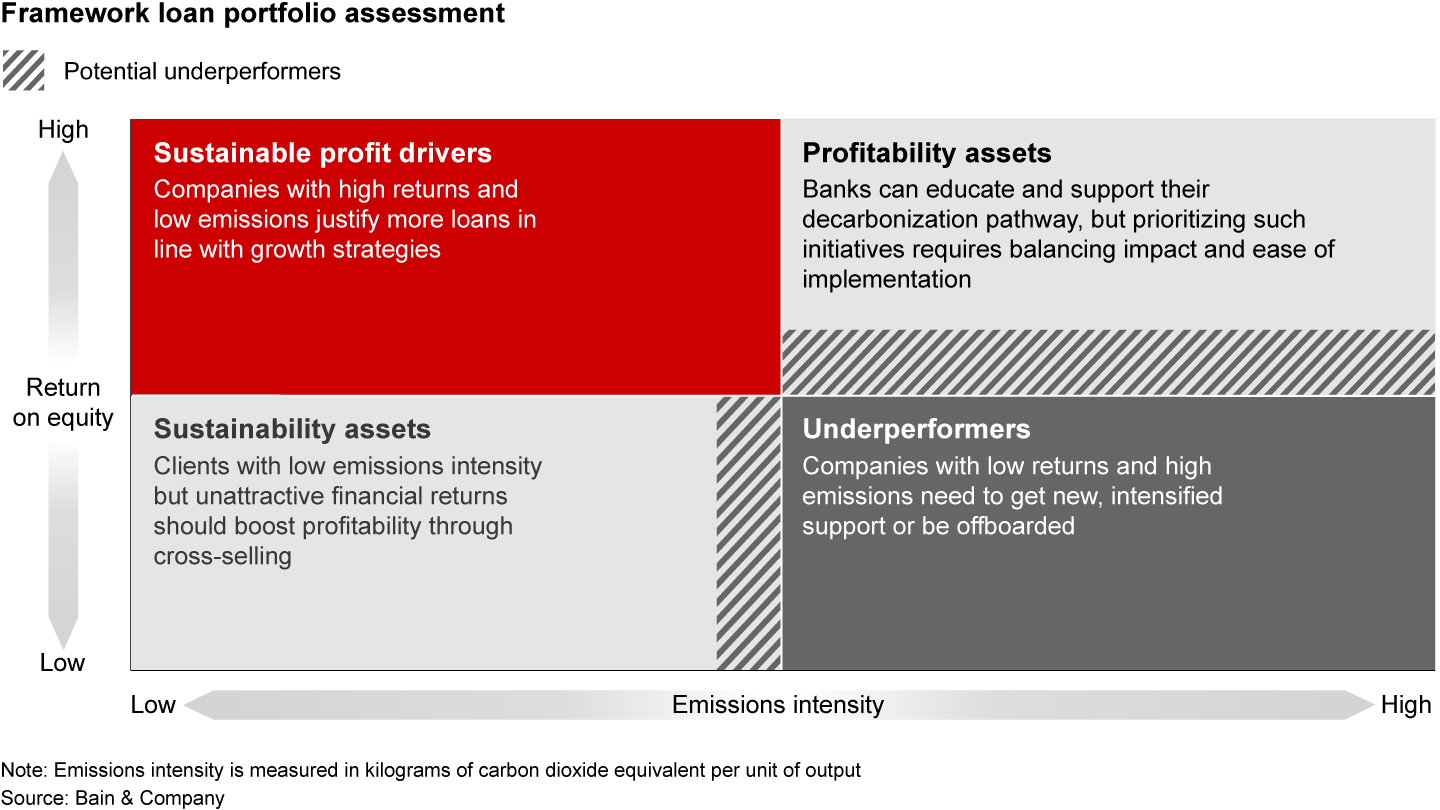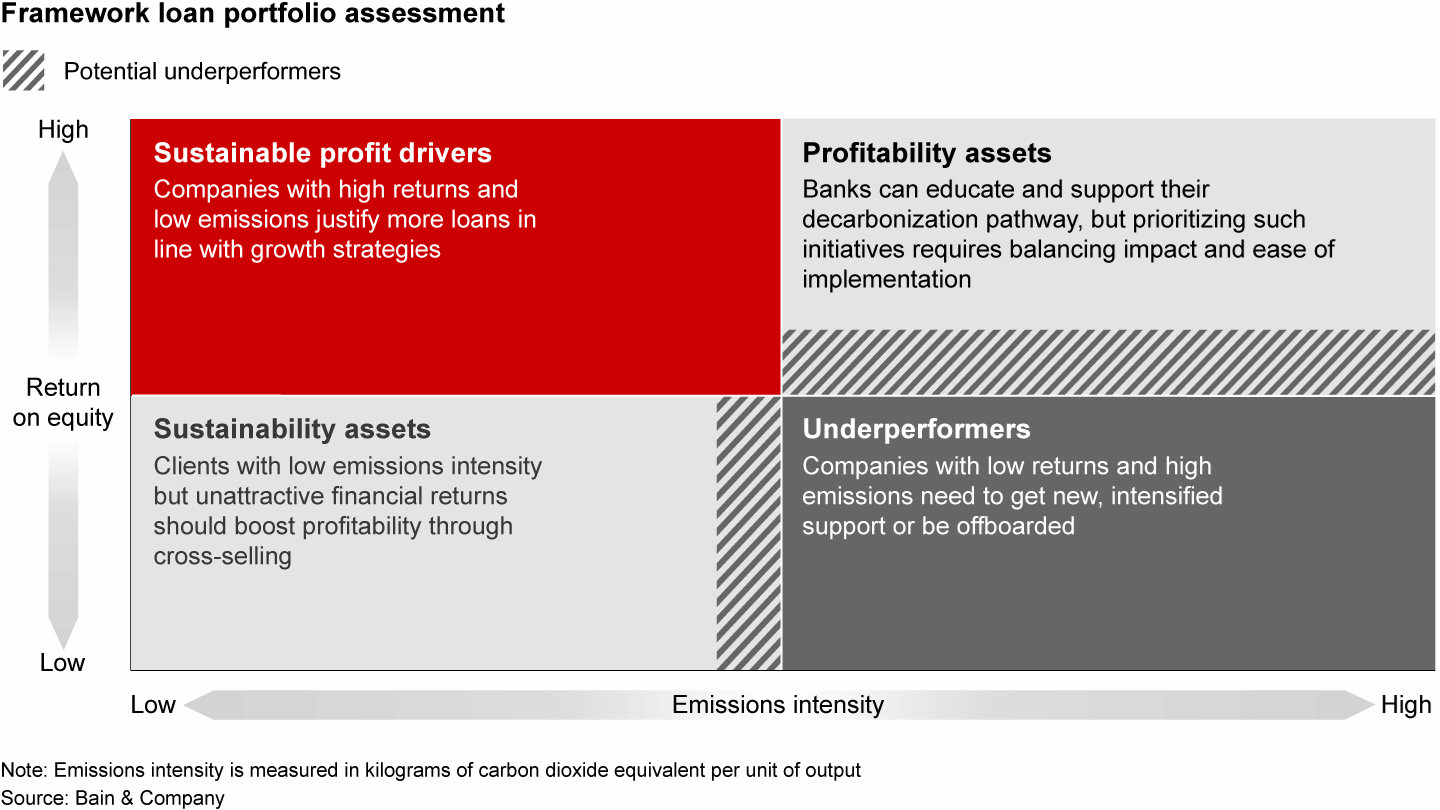Article

At the October 31 – November 12, 2021, UN Climate Change Conference in Glasgow, climate scientists and world leaders are mapping the roads to a decarbonized future. Paving those roads, deal by deal over the coming decades, is a job that will largely fall to banking leaders.
By financing new technology and infrastructure projects, banks will be crucial to reaching the Paris Agreement’s targets. Most banks are already chasing sustainable investment strategies. Scores of banks, including some of the world’s biggest, have signed on to the Net-Zero Banking Alliance.
It’s a complex journey for any bank, fraught with blind spots and competing interests, but we can help. We have developed an end-to-end solution that balances sustainability with financial performance. While other accepted methodologies exist, they have weaknesses, leaving gaps in their assessments of the entire loan portfolio of a bank (including small and medium-sized enterprises).
Our proven methodology, on the other hand, gives you clarity on your portfolio emissions and opens a pathway to decarbonization. Our four-part approach is applicable across any region or industry (see Figure 1).
Our end-to-end approach to portfolio decarbonization consists of four parts
These four elements—namely, determining emissions targets, data scaling and monitoring, mitigation and client engagement, and portfolio optimization—are interrelated. Addressing them all in a careful sequence is therefore critical. Our multifaceted approach allows our clients to move quickly, setting the basis for future refinements while testing their alignment with their decarbonization goals.
Determining emissions targets
For any bank, the first step in the decarbonization process is understanding the emissions produced by a loan portfolio’s underlying assets, a process that involves advanced analytics.
To measure a portfolio’s emissions footprint and create a pathway toward reducing that footprint, we use a combined top-down and bottom-up approach. From the top down, we take national targets and reduce them to sector and subsector levels in order to determine the fair share of responsibility for a given industry or company. And from the bottom up, we analyze the recipients of a bank’s loans and identify the key causes of their carbon emissions.
Such data can be inconsistent, often covering only a small sample of a given portfolio. But we use improved data collection to triangulate the best possible set of numbers.
Once we determine the emissions footprint of a given portfolio, we can use company goals, subsector benchmarks, and industry forecasts to determine the fair share of the targets being imposed upon them. This lets a portfolio manager know how many high-emissions assets would require mitigation measures to reach the bank’s overall goals.
Data scaling and monitoring
Decarbonization efforts depend largely on the effective use of expanded data sets. This gets easier every day as companies gather more objective data on energy and fuel use, lighting and heating, machinery and furnace emissions, and more. We help clients enrich those data sources and supplement them with secondary sources, such as government agencies and external vendors. The accuracy of these measurements will improve over time, requiring an adjustable model.
We find that a lot of banks can do a lot more with manual data gathering as well. Account managers can assess their clients’ emissions by collecting information in sector-specific, fully digitalized annual questionnaires. Our teams also bring to the table a close working relationship with EcoVadis, the leading platform for environmental, social, and corporate governance (ESG) ratings and related supply chain improvement.
Such data enrichment generates insights that can help banks identify opportunities for reducing greenhouse gas emissions. We help our banking clients design and implement dashboards to monitor these values and use them to steer portfolio decisions. This trend will continue as artificial intelligence augments the ways in which banks can monitor their client’s assets.
Mitigation and client engagement
Banks possess a unique power to foster green technologies and create transparency around emissions footprints. Impact loans and differential pricing are just two ways banks can incentivize their clients to adopt mitigation strategies. We’ve seen banks offer their clients lower interest rates and payment flexibility based on ESG achievements.
Driving sustainability initiatives can benefit banks, not merely by generating new revenue streams; our research shows that less sustainable clients are roughly twice as likely to be in arrears than more sustainable ones. As shown in our recent brief, this was true even when controlling for initial risk ratings and other variables.
We help our banking clients encourage mitigation strategies across their portfolios by prioritizing their initiatives based on impact and ease of implementation. Effective client engagement and communication are critical. We recommend that banks establish an ESG advisory desk to offer 360-degree value proposition to their clients, with potential advice on certifications, assessments, ratings, and more.
Portfolio optimization
With clear targets, enriched data, and mitigation strategies in place, we then help you settle upon a transition path that addresses the high-emissions underperformers in your portfolio and helps them transition to a more sustainable future.
For example, in our experience, working closely with and in some cases offboarding the least sustainable 5% of clients in a portfolio can significantly improve its financial performance while also lowering its emissions intensity. The reduction of emissions correlates with lower default risk, which, in turn, increases average portfolio profitability (see Figure 2).
Our framework supports creating a point of view on sustainability client optimization


Toward a more sustainable future
The race to decarbonize is accelerating across the banking industry. Europe's central banks have made funds available for ESG investment. Several regulatory bodies around the world are planning to require companies to report climate risk information, including the European Commission and the US Securities and Exchange Commission. The SEC's chairman said in July that such information could include "metrics related to greenhouse gas emissions."
Another factor in the shift is investor demand as clients consider sustainability when choosing and promoting their banks. These trends point to a future in which banks will play a leading role in the global fight to reduce greenhouse gas emissions by the middle of this century.
As the leading banks aim to get out in front of these trends, our four-part framework provides a pragmatic and comprehensive approach to decarbonizing loan portfolios. It covers parts of a bank’s portfolio that are overlooked by other approaches, and it proves that profitability and sustainability need not be seen as competing virtues.